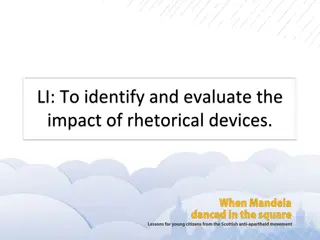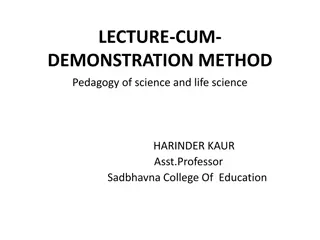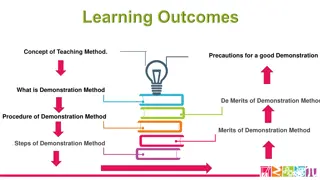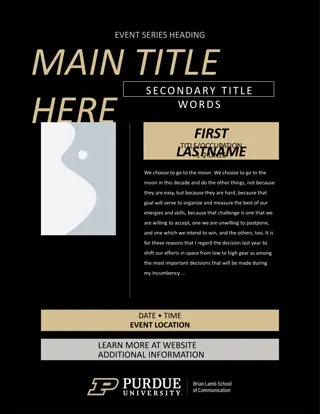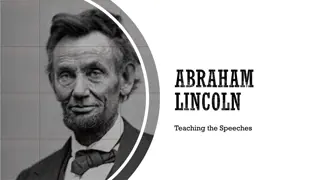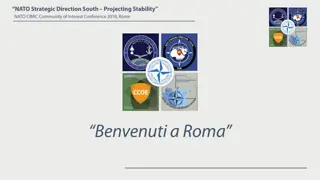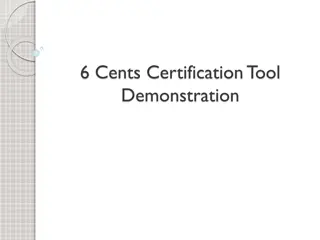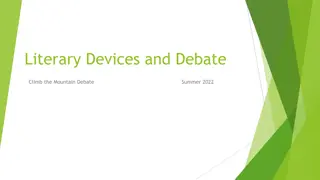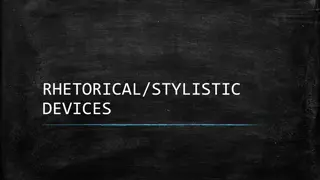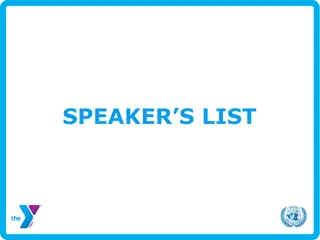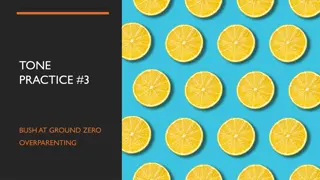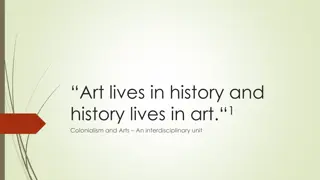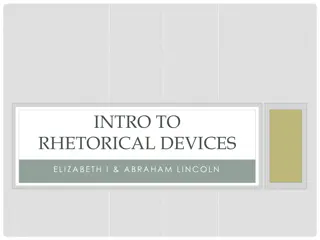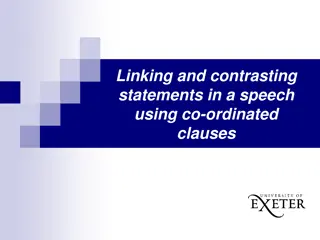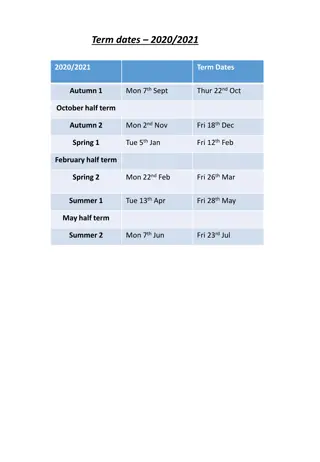Mastering the Art of Demonstration Speeches
Unlock the secrets of delivering engaging demonstration speeches by learning the essence of explaining and showing how to do something effectively. Discover the essential components, guidelines, and topic ideas for crafting a compelling demonstration speech that captivates your audience's attention and leaves a lasting impact.
Download Presentation

Please find below an Image/Link to download the presentation.
The content on the website is provided AS IS for your information and personal use only. It may not be sold, licensed, or shared on other websites without obtaining consent from the author.If you encounter any issues during the download, it is possible that the publisher has removed the file from their server.
You are allowed to download the files provided on this website for personal or commercial use, subject to the condition that they are used lawfully. All files are the property of their respective owners.
The content on the website is provided AS IS for your information and personal use only. It may not be sold, licensed, or shared on other websites without obtaining consent from the author.
E N D
Presentation Transcript
DEMONSTRATION SPEECH The how to speech!
What is a Demonstration Speech? A Demonstration speech is written to EXPLAIN SHOW SHOW people HOW HOW to do something. This might involve using various types of visual aids, or handout to ensure the effectiveness of the instructions. EXPLAIN and General Purpose: General Purpose: To Demonstrate Specific Purpose: Specific Purpose: Determine the specific purpose of your speech topics. State it in one simple sentence. For example: I want to demonstrate how to
Assignment TIME LIMIT: TIME LIMIT: 7-10 minutes OUTLINE: OUTLINE: Due one week prior to due date NOTECARDS: NOTECARDS: Turn in the day of the speech. SOURCE CARDS: SOURCE CARDS: 5 sources, turn in day of speech VISUAL AIDS: VISUAL AIDS: minimum of 2 but no limit. DRESS: DRESS: DRESS APPROPRIATELY FOR THE DEMONSTRATION!
Demonstration Topics Your speech should show how to do something as well as give information and facts about its background and/or history. TO DEMONSTRATE TO DEMONSTRATE IS TO SHOW . IS TO SHOW . How To Make ... How To Fix ... How To Use ... How To Do ... How ... Works How ... Is Done, Produced or Made KNOW YOUR AUDIENCE Who are they - demographics? What are their interests? What do they like? What are their needs?
Demonstration Topics DON T FORGET DON T FORGET to pick a topic you know how to do! That will fit into the time limit (not too short or too long) That will keep your audience s attention! That can be demonstrated either in the room or somewhere on the school boundaries with props/visual aids that you can manage well and/or are accessible.
General Demonstration Topics Food and Drink Household Sports Recreation Health & Beauty Home Improvement Dancing Instruments Fashion Decorations Cars Science Nature Magic Yoga Food Construction Animals
Specific Demonstration Topics to tie a tie to be a vegetarian to change oil to create a mask to perform tai chi chi to play piano to do a cheerleading routine to make a pineapple upside down cake to dance the waltz to plan a wedding to paint flowers to play guitar to make home made ice cream to change a tire to dance the hula to make your garden full of flowers year around to throw a curve ball to make won-tons to Irish dance to make a fast summer salad to make a new candle out of old ones to make a dress to make a birthday cake to carve a pumpkin to style your hair to greet Japanese people to juggle
Specific Demonstration Topics to prevent injury to develop the best serve in a tennis game to exercise to do yoga to speak Italian to memorize to do standup comedy to do a back handspring to write a song/poetry to play golf to do ballet to speak a different language to do a slam dunk to do laundry to make origami to tie a square knot to do basic judo to make lasagna to sing a song to make a sweet dessert to ski, wakeboard, etc. to make sand castles to iron to throw a fast pitch ball to saddle a horse to make a golf swing
Introduction HOOK HOOK or motivate your audience by getting their attention. State the purpose teach them. purposeof your speech what you are going to Preview Previewthe main points . No need to list the steps, just give a general idea of what is to come Give the audience a reason to listen to them reason to listen...a use that might apply
Body State your background and why your chose it) background with this skill (when did you learn it Give some factual popularity of it) factualinformation information (history of the skill, or Instructions Instructions - Providing clear and concise instructions on how to complete a task o Task Breakdown - The task must be broken down in a logical format, step by step o Key Points - Key points must be emphasized including any safety issues
Conclusion Review Review what was just covered in your speech. Restate Restate your purpose. Tell us the value value in knowing this skill. Leave us with a final punch! final punch!
Outline II. BODY: II. BODY: A. My background with this skill B. Some Factual info about this skill C. Instructions / Task breakdown I. INTRODUCTION: I. INTRODUCTION: A. Attention Getter: B. Purpose: C. Preview main points: 1. My background with this skill 2. Some Factual information about this skill 3. Instructions / Task breakdown D. Reason to listen: INTERNAL SUMMARY INTERNAL SUMMARY III. CONCLUSION: III. CONCLUSION: A. Review Main points: B. Restate Purpose: C. What is the value in knowing this skill: D. Final Punch:
NOTECARDS 1. Use white index cards. o Make an outline for the body of your speech WITH KEY POINTS. o Write out any transitions (review/previews) 2. Keep in mind that your card is graded for neatness as well as completeness--you can't speak WELL from messy and cluttered notes.
SOURCE CARD a. Turn in 5 3x5 note cards each with complete bibliography of at least 5 published sources (within the last 5 yrs) b. No more than three of the sources can come from the Internet, and all Internet sources should include a complete reference not just a URL address. c. Dictionaries and encyclopedias will only count as ONE source
VISUAL AIDS 1. 1. Visual aids should be used to enhance Visual aids should be used to enhance the explanation of the topic. It is not to take the place of information. Should be well prepared and incorporated into the speech. 2. Ask yourself these questions about your visual aid 2. Ask yourself these questions about your visual aid o Is the visual aid accurate and contains NO spelling / fact errors, and is it up to date? o Can the audience see the aid easily from the back of the room? o Is the information neat with adequate spacing and contrasting colors? o Is the visual aid SIMPLE and not cluttered with too many details?
Practice Delivering the Speech NONVERBAL DELIVERY NONVERBAL DELIVERY Facial expressions Gestures General body movement Overall physical appearance VOCAL DELIVERY VOCAL DELIVERY Volume Rate Pitch Variety Pronunciation Articulation




